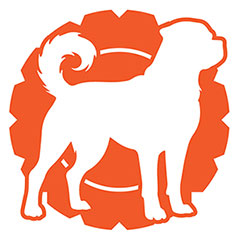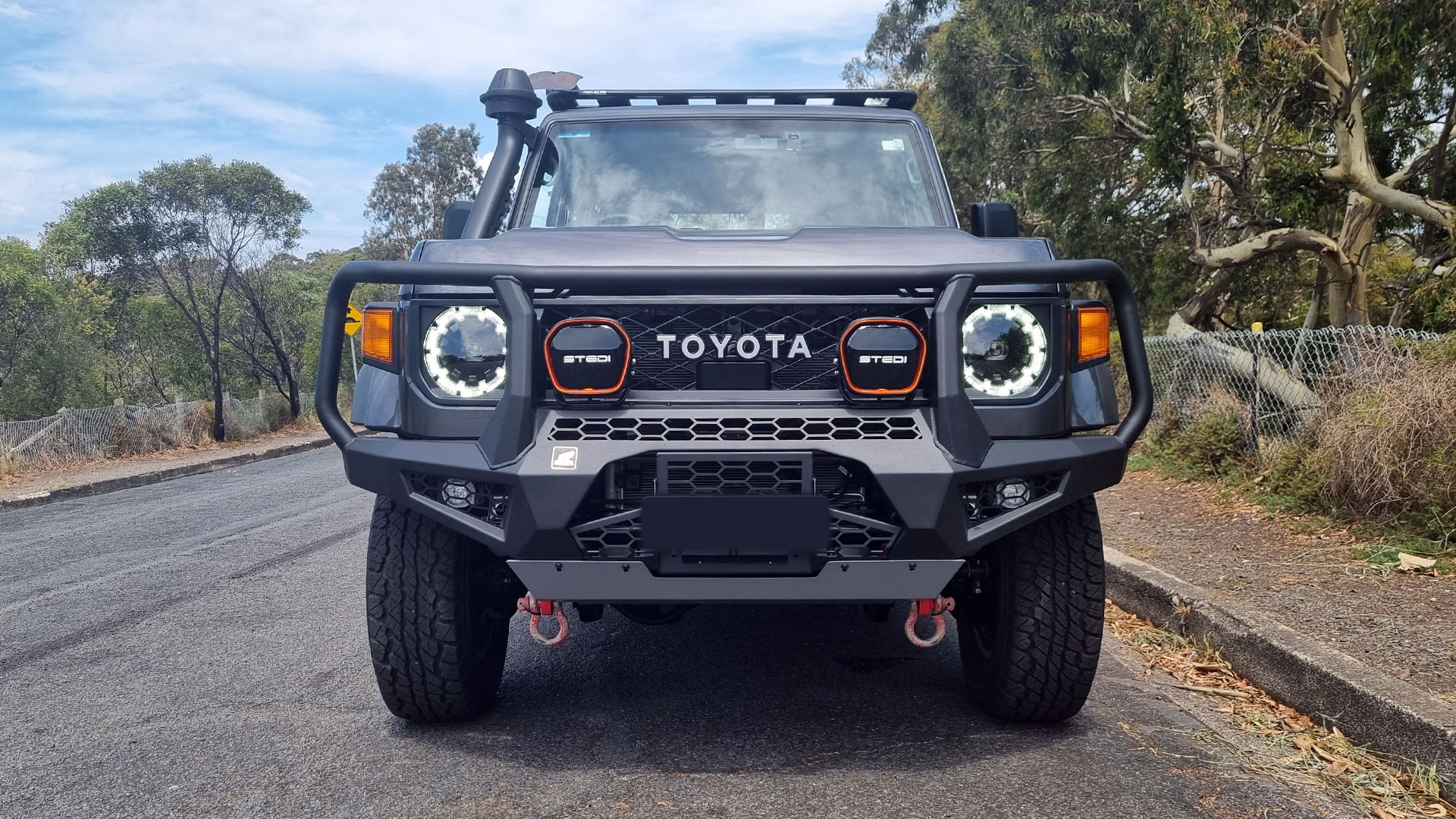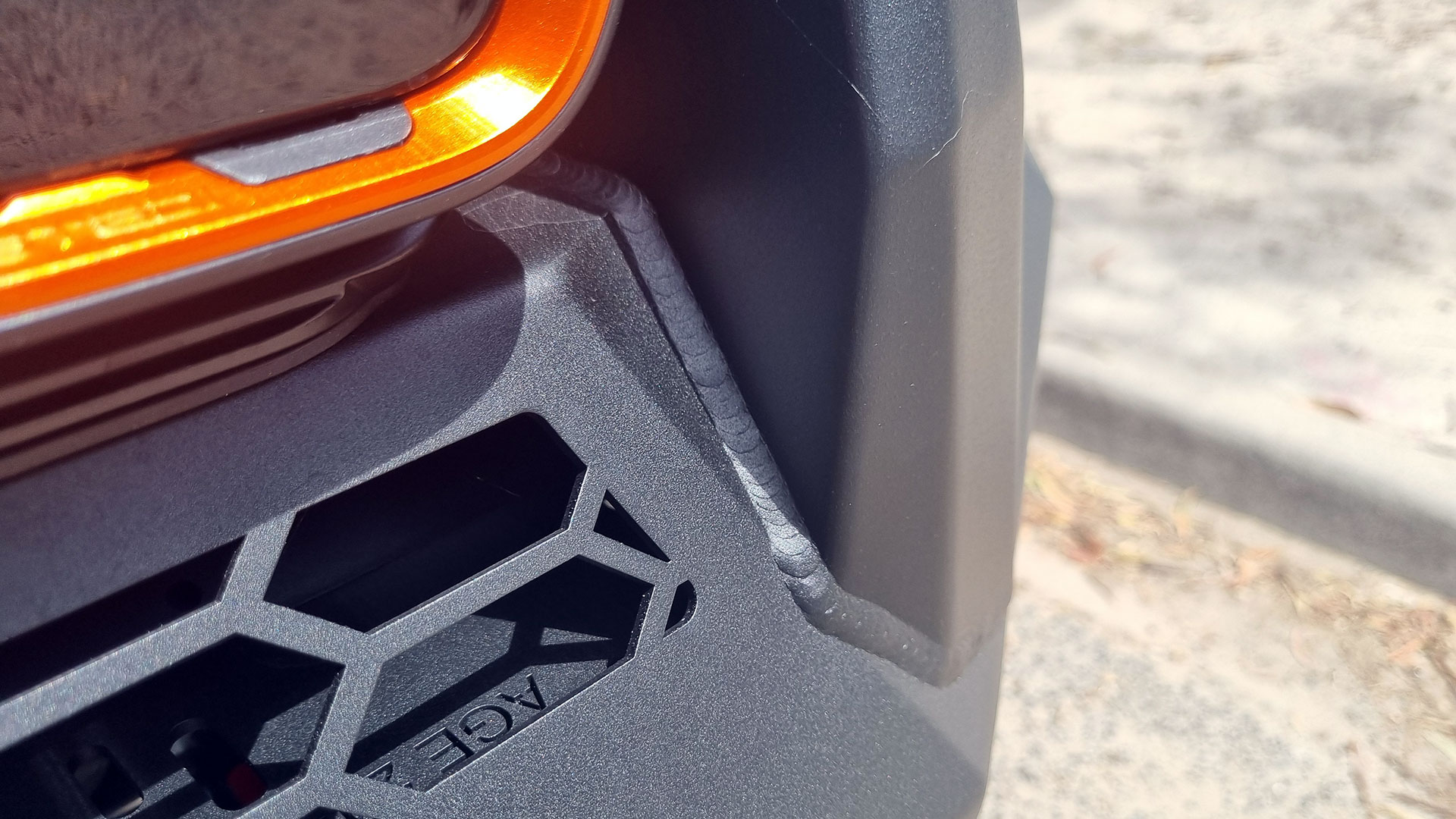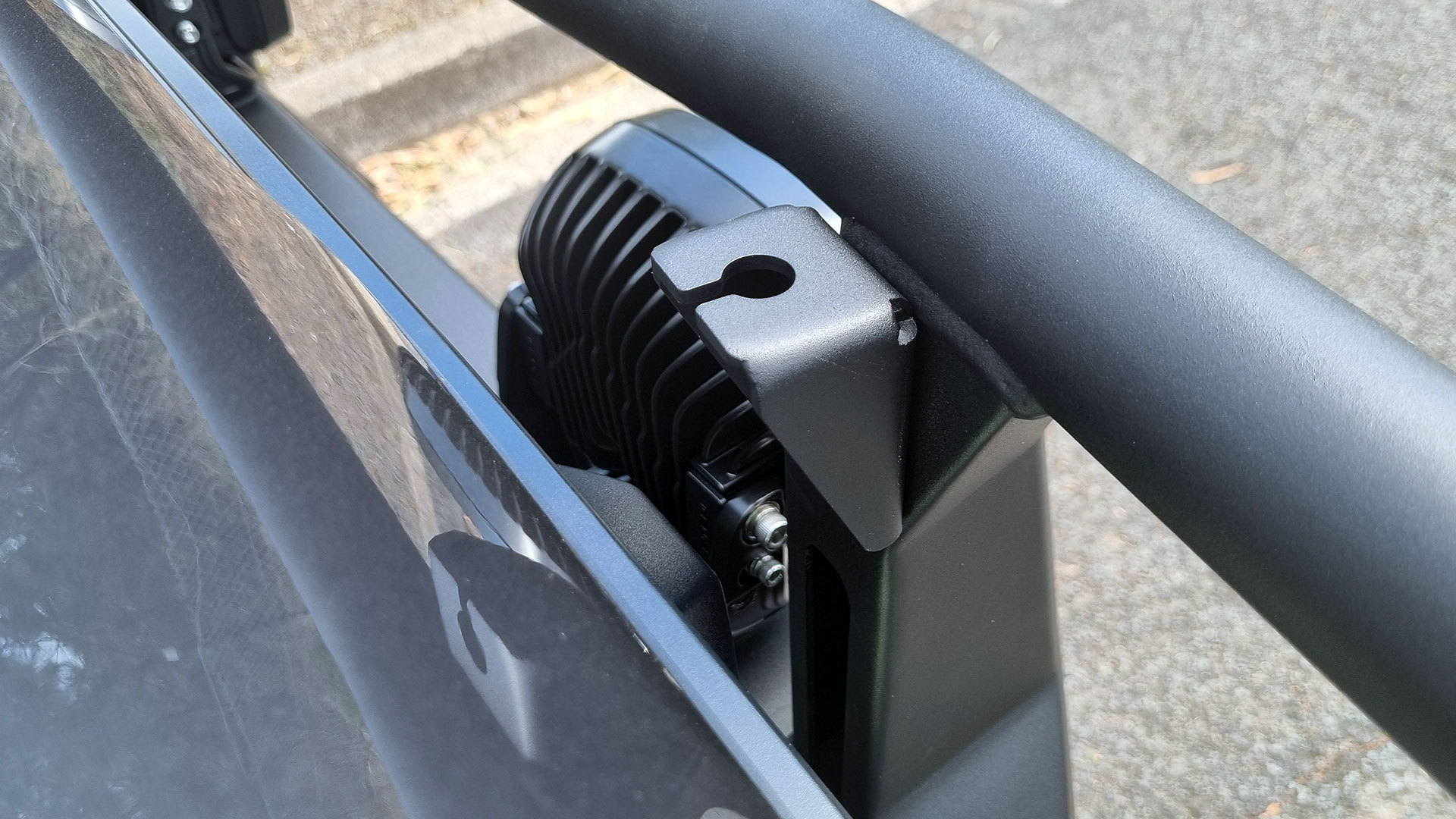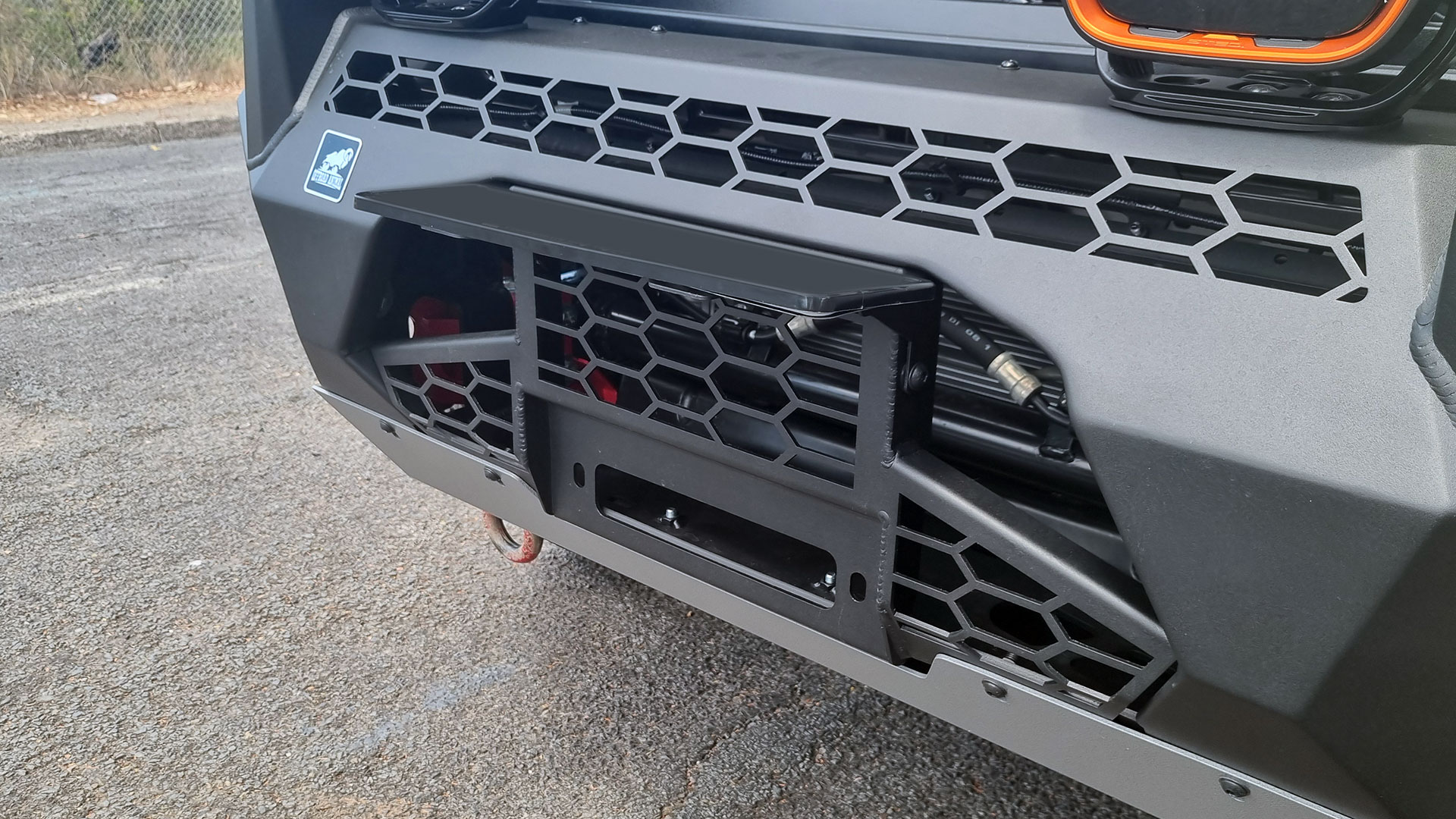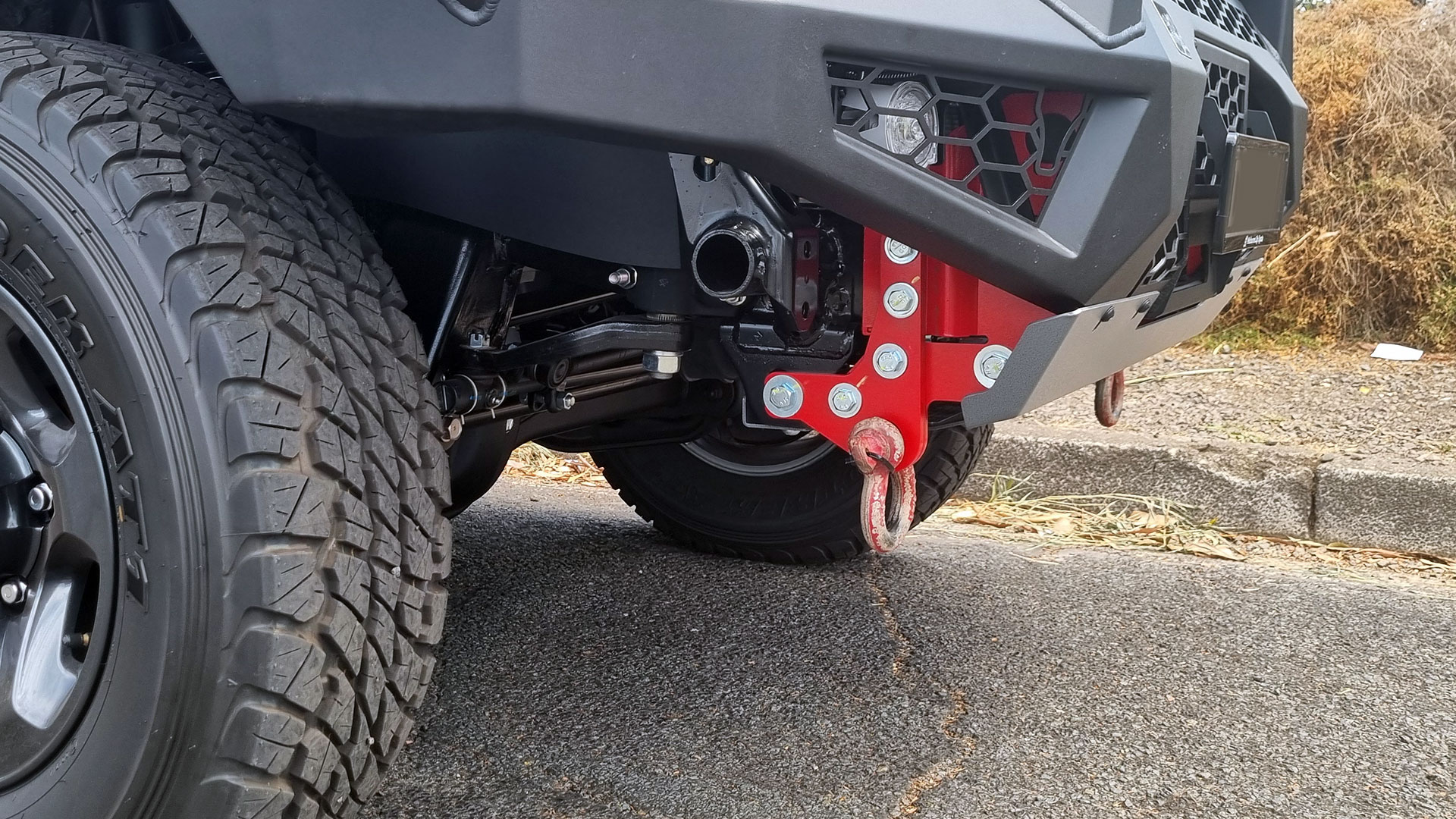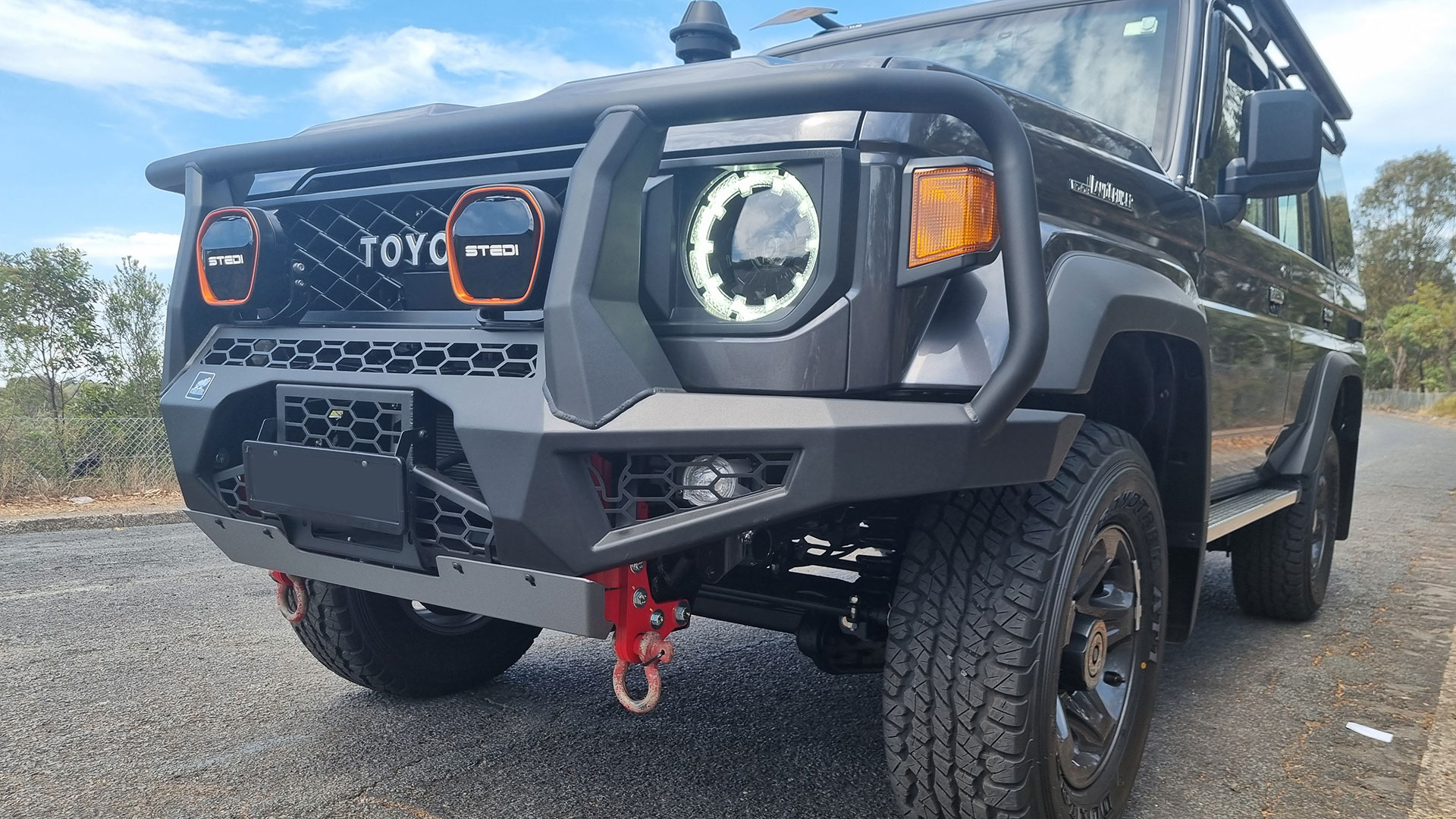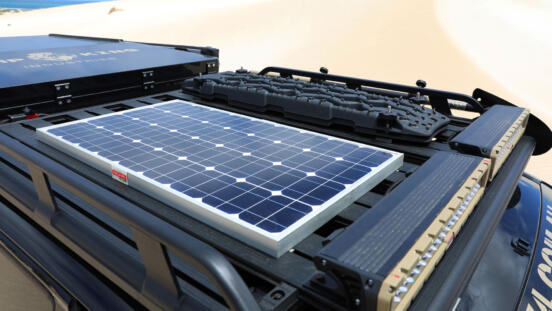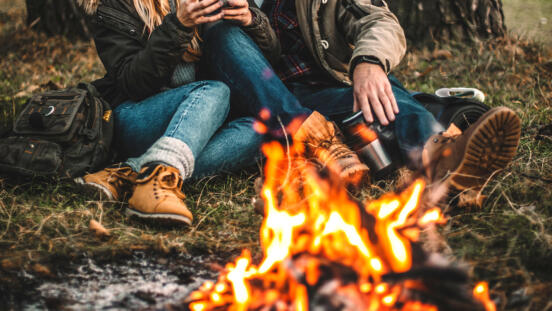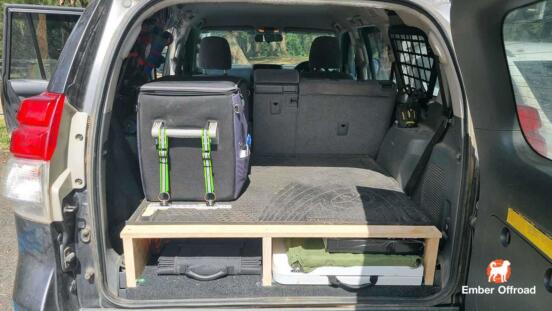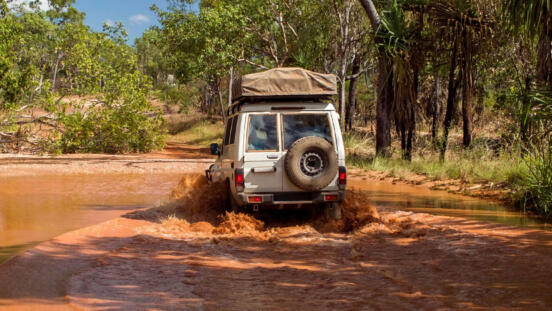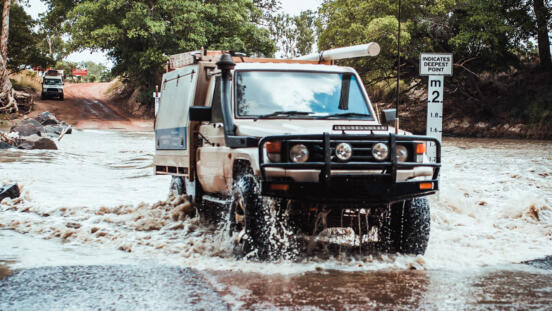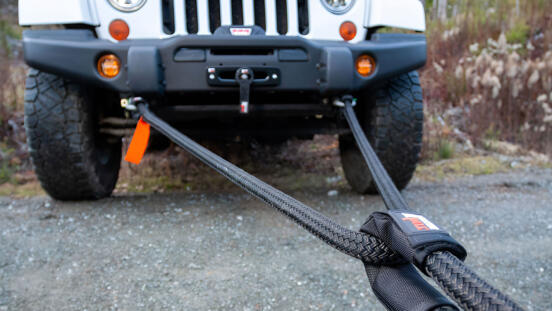As part of my new 2024 Toyota LC76 GXL build, I've gone with the Offroad Animal Toro bullbar, and now that it's on the vehicle I have to say I couldn't be happier with it.
Note: Not a paid promotion/sponsorship.
Quick specs rundown:
- Full steel construction:
- 5mm mounts and winch cradle
- 3mm pan and wings
- 2mm mesh panels
- 20mm rated recovery points
- Zinc plated then powder coated (matte black)
- Winch mount + included license plate flip
- Option for integrated 32" single-row light bar
- Weight: 56kg
- ADR-compliant and airbag-compatible
- Full bumper replacement
Build quality
Right off the bat, the quality of the build is obvious. The bar is wrong solid, with no wiggle or panel flex to be found anywhere. The welding is even, smooth, and consistent, as is the factory matte black powder coating.
The grill cuts are clean and precise, and everything fits perfectly, both in terms of vehicle fit, and mounted accessories.
Design and features
The hoops and bar are all welded, with none of the modular or bolt-on sections that have become an option in recent years. Whether or not bolt-on hoops are appropriate for you will depend on your application, but personally, I've always thought the concept to be flawed.
A bullbar is ultimately a piece of protection equipment, and why you would sacrifice the long-term strength of the bar for some convenience at the time of installation escapes me, but to each their own. In any case, if you're looking for strength from a bullbar, the Toro will tick the box.
For the 70 series, the bar is also a full bumper replacement that doesn't require any cutting of existing panels and doesn't interfere with the "Toyota Safety Sense" equipment on the front of the GXL: lane departure sensors, pre-collision safety system, road-sign assist, etc.
As you'd expect, the bar comes ready to mount aftermarket floodlights (the bar is also compatible with factory fog lights) and with UHF antenna mounts. One interesting discovery with the bar was the antenna mounts themselves are bolt-on, rather than being welded as is typical for other bars, allowing you to either remove unused brackets to tidy things up, or potentially replace them with mounting for other accessories.
I don't have a use for the mounting location at this particular moment in time, but I can see this being potentially a great alternative compared to adding U-bolts over your bar work, and stripping the powder coating in the process.
Dimensions
Width-wise, the bar is 5cm (2 inches) wider than the width of the vehicle, so will have near zero effect on maneuverability and fitting into your usual parking spaces, etc.
Length-wise, the bar extends just 16cm (6.2 inches) from the front grill. This was of particular appeal to me as while the truck will be used nearly exclusively for touring, living in a metropolitan area every bit of space counts when driving/parking a full-size 4x4 around home. The bullbars of many other popular brands on the market extend nearly double this, while not really offering any additional functionality for the increased space consumption
Winch cradle
A huge point for the Toro bar design is that the winch cradle allows installation from the front of the bullbar, unlike the majority of other bars which require crawling around below the vehicle to lift the winch in/out the bottom of the bar (fun when you're doing this by yourself with a 35kg winch), or removing the bar completely.
In the worst case of having to remove the bar completely to install/remove the winch, this makes servicing your winch once a year (which you should be doing) a real pain. If you don't have a comprehensive garage setup and/or a mate to help replace the bar every time, you're only other option is to pay a workshop to do it, adding to your maintenance costs. In reality, though, the majority of 4x4 winches just don't get serviced anywhere near as often as they should, as it's just too inconvenient.
The Toro bar eliminates this problem by making it easy to add/remove the winch from the front by yourself; with just a few bolts undone, the grill section you see below comes out to provide easy access to the winch mounting points.
(A full video on installing a Runva 13XP in this bullbar will be shared in the near future.)
An integrated flip-up license plate mount is also included with the bar. These are available as an aftermarket add-on for any bar, of course, but it shows the thought Offroad Animal and put into the bar features design by including it as standard. I must say, it still confuses me the amount of bullbar manufacturers that position the license plate mounts directly over where the winch fairlead will go, immediately obstructing your winch line.
On the subject of mounting the winch: A common myth circulating the 4x4 community is that winches "must" be mounted with their feet facing forward, and this is why most bullbars are designed without this front access, but this is simply not true.
WARN, Sherpa, Carbon, Runva, Superwinch, etc. all make "feet down" winches. You should confirm in your operation manual, of course, but the majority of winches are designed to be used this way.
Rated recovery points
Included with the bar is a pair of 20mm recovery points, rated for 4,500kg each (9,900 lbs).
As I've written about repeatedly in the past on the subject of recoveries, if you're off-roading, rated front recovery points are a no-brainer (see why here: 4x4 recovery-related death).
The design of the bar also removes a lot of unnecessary overhang you get with the factory bumper between the chassis rails to the side of the vehicle, improving your approach angle here and removing corners that would otherwise frequently bottom out on heavily rutted or uneven tracks.
The last word
Having used several of the other 3-letter competitors' bullbars, would I go for the Offroad Animal Toro bullbar again? Definitely.
I like everything about the bar, and would happily recommend it to anyone currently shopping for their vehicle.
Related article: Toyota 2024 LC76 GXL 2.8L manual: Pre-modification review
